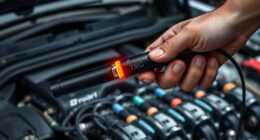If your Ford Transit’s ABS and traction control lights are on, start by inspecting the wheel speed sensors for dirt, damage, or loose connections, as faulty sensors often cause these alerts. Check your ABS pump and module for blown fuses or wiring issues. Software glitches and electrical problems can also trigger the lights, so using a diagnostic scanner can help identify specific faults. Keep in mind, a thorough check of these components can pinpoint the cause—more details follow to guide you through the process.
Key Takeaways
- Check for fault codes using a diagnostic scanner to identify specific ABS or traction control system errors.
- Inspect wheel speed sensors for damage, dirt, corrosion, or loose wiring connections.
- Verify the ABS pump and module for proper operation, including fuse condition and electrical supply.
- Review wiring harnesses and connectors for damage, corrosion, or disconnections affecting system communication.
- Update or reset the vehicle’s electronic control unit (ECU) software if software glitches are suspected.
Common Causes of ABS and Traction Control Warning Lights
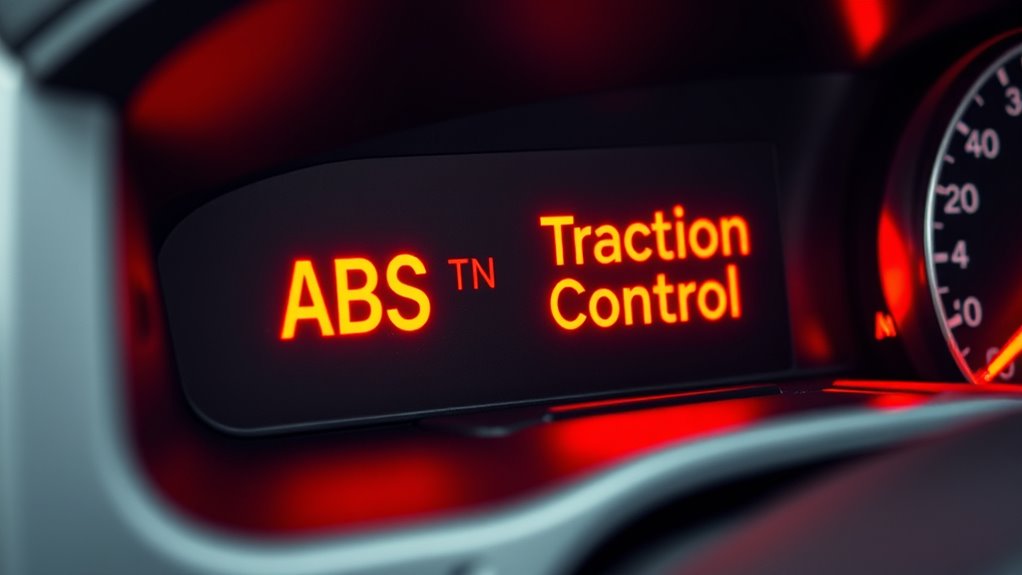
When the ABS and traction control warning lights come on in your Ford Transit, it often points to a few common issues. One major cause is ABS pump and module failure, which can cause brakes to lock unexpectedly and feel unbalanced. Symptoms include reduced brake effort and insufficient fluid reaching calipers. Electrical and wiring problems are also frequent culprits; damaged or corroded wiring, faulty connections, or short circuits can disrupt communication with ABS components. Hydraulic failures, such as leaks or low brake fluid, impair pressure regulation, activating warning lights. Additionally, electrical faults can sometimes be caused by faulty sensors or connectors, further complicating diagnostics. Software glitches or control module malfunctions in the traction control system can trigger alerts without mechanical faults. These issues typically stem from electrical faults, hydraulic problems, or module failures, all affecting your vehicle’s braking safety. Regular maintenance and diagnostics are essential to identify and resolve these underlying causes promptly.
Diagnosing Faulty Wheel Speed Sensors
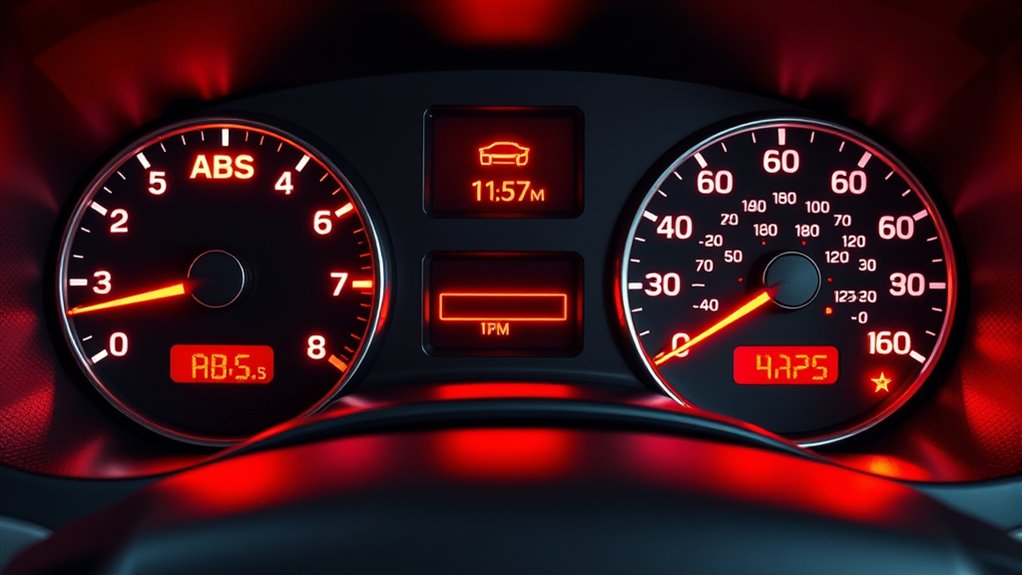
Faulty wheel speed sensors are a common reason for ABS and traction control warning lights to come on in your Ford Transit. To diagnose, connect a diagnostic scanner to the ABS control module and retrieve fault codes. Codes like C0037(01) point to specific wheel sensor issues. Use live data monitoring to see if sensors report signals or remain at zero during wheel rotation, indicating malfunction. Physically inspect the sensor for damage, corrosion, dirt, or debris that could impair signals. Check wiring harnesses for cuts, corrosion, or loose connections. Use a multimeter to test sensor resistance and verify signal output during wheel rotation. Proper diagnosis guarantees accurate repairs and safe operation. Additionally, understanding the best wheel speed sensors can aid in selecting quality replacements and ensuring reliable performance. Recognizing the role of sensor placement can further improve troubleshooting accuracy and sensor longevity. Regularly inspecting the sensor mounting and ensuring it is securely attached can also prevent future issues.
Checking the ABS Pump and Module
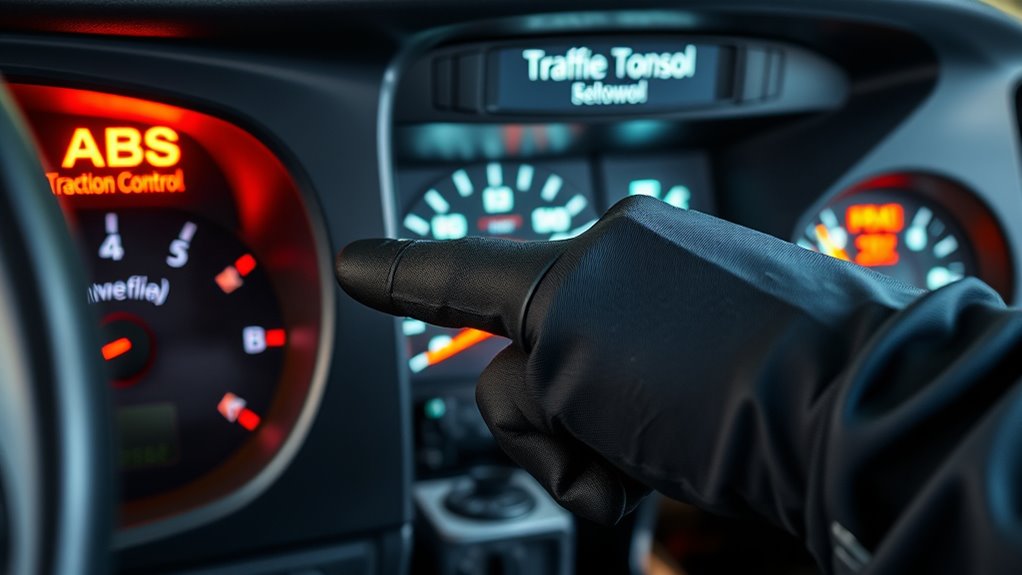
Checking the ABS pump and module is essential to diagnose issues causing warning lights on your Ford Transit. Start by inspecting the fuses—there’s usually a low-amp fuse for the module and a high-amp fuse for the pump motor. Use a multimeter to test resistance; good fuses should show zero resistance. Perform voltage drop tests across the fuse and wiring to detect high-resistance areas that could limit power to the pump. Measure battery voltage at the fuse and compare it with supply terminals to identify wiring faults. Next, test the pump motor’s operation by activating it with a multimeter. If it stalls or runs continuously, internal faults may exist. Finally, check the physical condition of the pump and module for damage, corrosion, or leaks, which can impair function. Additionally, contrast ratio can influence the visibility of warning lights in certain dashboard displays, making it important to ensure all components are functioning correctly.
Software and Electrical System Troubleshooting
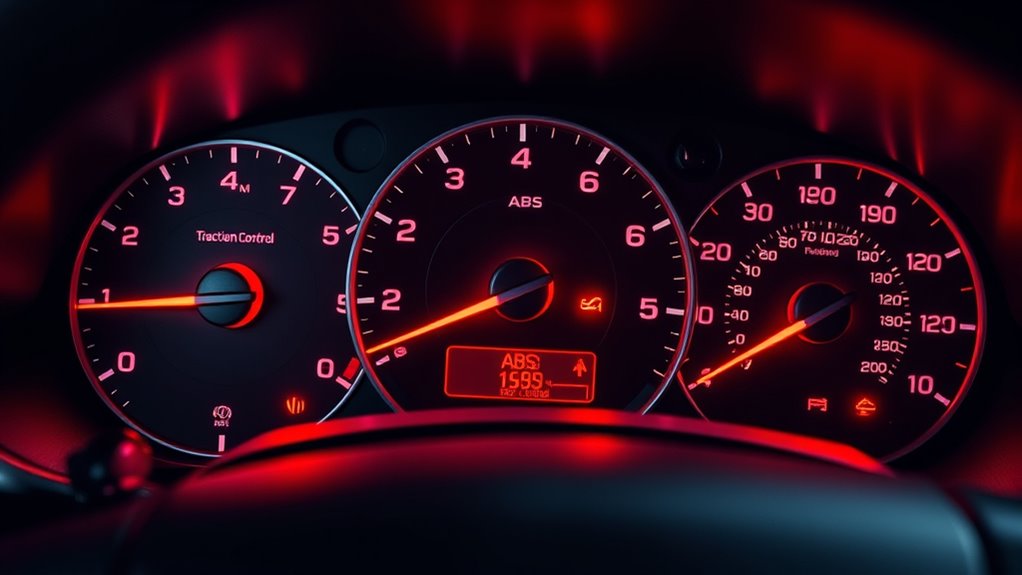
Diagnostic software plays a crucial role in troubleshooting Ford Transit ABS and traction control systems, allowing you to interpret error codes and identify underlying issues. Fault codes like C0037 or C1A99 point to sensor problems, but intermittent communication failures can complicate diagnostics. Updating the ECU software or resetting the system may temporarily clear warning lights, yet hardware issues often persist. Proper electrical troubleshooting involves inspecting wiring harnesses, connectors, and performing continuity and voltage tests. Loose, damaged, or corroded connections often cause false alarms. Here’s a quick visual:
| Inspection Area | Common Issue |
|---|---|
| Wiring harnesses and connectors | Damage, corrosion, or disconnections |
| Error code interpretation | Sensor-specific failures, software glitches |
| System resets and updates | Outdated software or corrupted data |
| Electrical testing | Continuity and voltage issues |
Regular software validation and thorough electrical checks are essential for accurate diagnosis. Electrical system diagnostics can reveal hidden issues that software updates alone might not resolve. Additionally, inspecting sensor wiring connections can help prevent false readings and improve system reliability.
Essential Steps for Safe Repairs and Maintenance
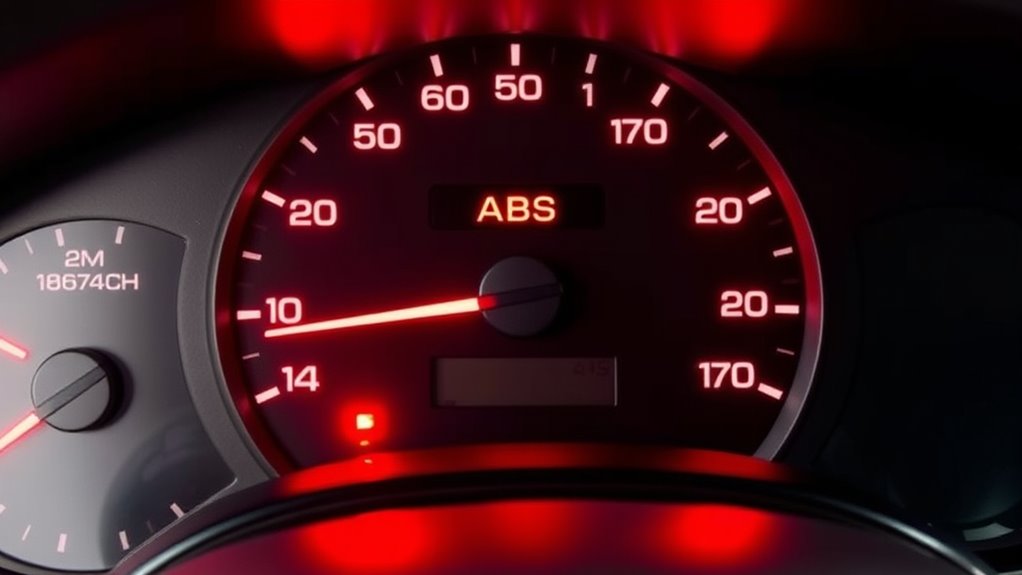
Ensuring safety during repairs and maintenance of the Ford Transit’s ABS and traction control systems requires a systematic approach and adherence to best practices. Always start by disconnecting the battery to prevent electrical shocks or accidental activation of the system. Wear personal protective equipment such as gloves and eye protection. Use proper tools and follow manufacturer guidelines for inspecting mechanical components like wheel bearings, brake calipers, and drive shafts, ensuring no damage or wear is overlooked. When inspecting electrical wiring, look for cuts, corrosion, or loose connectors, and secure all connections tightly. Test sensors and wiring with diagnostic tools before reassembling. Verify system functionality through brake tests and system checks, ensuring all components operate safely and correctly before returning the vehicle to service. Regular inspections of the system can help identify system malfunctions issues early and prevent potential failures. Additionally, being aware of Pimple Patch technologies can serve as a reminder of the importance of targeted and effective repairs to maintain optimal vehicle safety.
Frequently Asked Questions
Can a Faulty Wheel Speed Sensor Affect My Vehicle’s Speedometer?
A faulty wheel speed sensor usually won’t directly affect your vehicle’s speedometer. Speedometers rely on signals from the transmission or gearbox, not the wheel sensors. However, if the sensor malfunctions, it can trigger warning lights and impair ABS or traction control systems. To guarantee accurate speed readings, check tire size and condition, as these can influence the speedometer’s accuracy.
How Often Should I Check My ABS System for Issues?
You should check your ABS system regularly to keep it in tip-top shape, ideally every 15,000 miles or once a year. Keep an eye on warning lights, and inspect sensors, wiring, and brake fluid during routine maintenance. If you notice any issues like longer stopping distances or sensor errors, don’t wait—address them promptly. Staying proactive guarantees your braking system remains reliable and prevents bigger problems down the road.
Are Software Updates Necessary for Preventing ABS Warning Lights?
Yes, software updates are necessary because they improve fault detection, communication, and system responsiveness. They help prevent false warning lights caused by glitches or minor sensor discrepancies. Updating your vehicle’s software guarantees better diagnostics and reduces unnecessary repairs. However, remember that hardware issues like damaged sensors or wiring faults still need physical repairs. Regular updates, combined with physical inspections, keep your ABS system functioning properly and help avoid warning lights.
Is It Safe to Drive With ABS or Traction Control Warning Lights On?
You can drive with the ABS or traction control warning lights on, but it’s not entirely safe. Your vehicle’s basic braking still works, but you lose the added safety features that prevent wheel lockup and loss of control. Drive cautiously, especially in poor weather or tricky conditions, and avoid aggressive driving. Get your system checked and repaired promptly to guarantee full safety and ideal handling on the road.
What Are the Costs Involved in Repairing ABS and Traction Control Systems?
Repairing your ABS and traction control systems can cost between $880 and $1,000 for full module replacement, with parts around $624 and labor from $256 to $376. Diagnosis typically costs $122 to $179, while repairing or rebuilding the ABS pump can be more affordable, often with a lifetime warranty. Regional rates and the extent of damage influence the final costs, so getting a proper diagnosis helps prevent unnecessary expenses.
Conclusion
If your Ford Transit’s ABS and traction control lights are on, don’t ignore them—over 70% of these issues stem from faulty wheel sensors or wiring problems. Regular inspections can prevent costly repairs and keep you safe on the road. Remember, catching issues early can save you an average of $500 in repair costs. Stay proactive with maintenance, and you’ll keep your Transit running smoothly and safely for miles to come.






